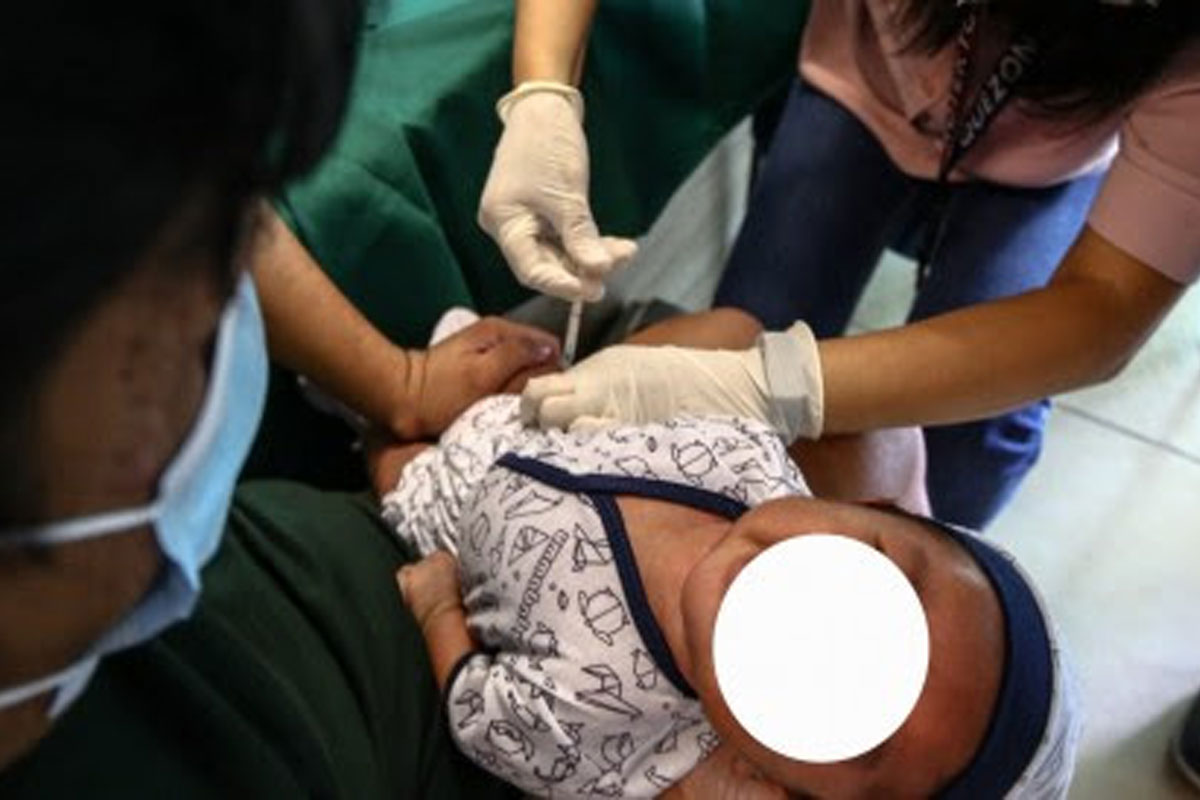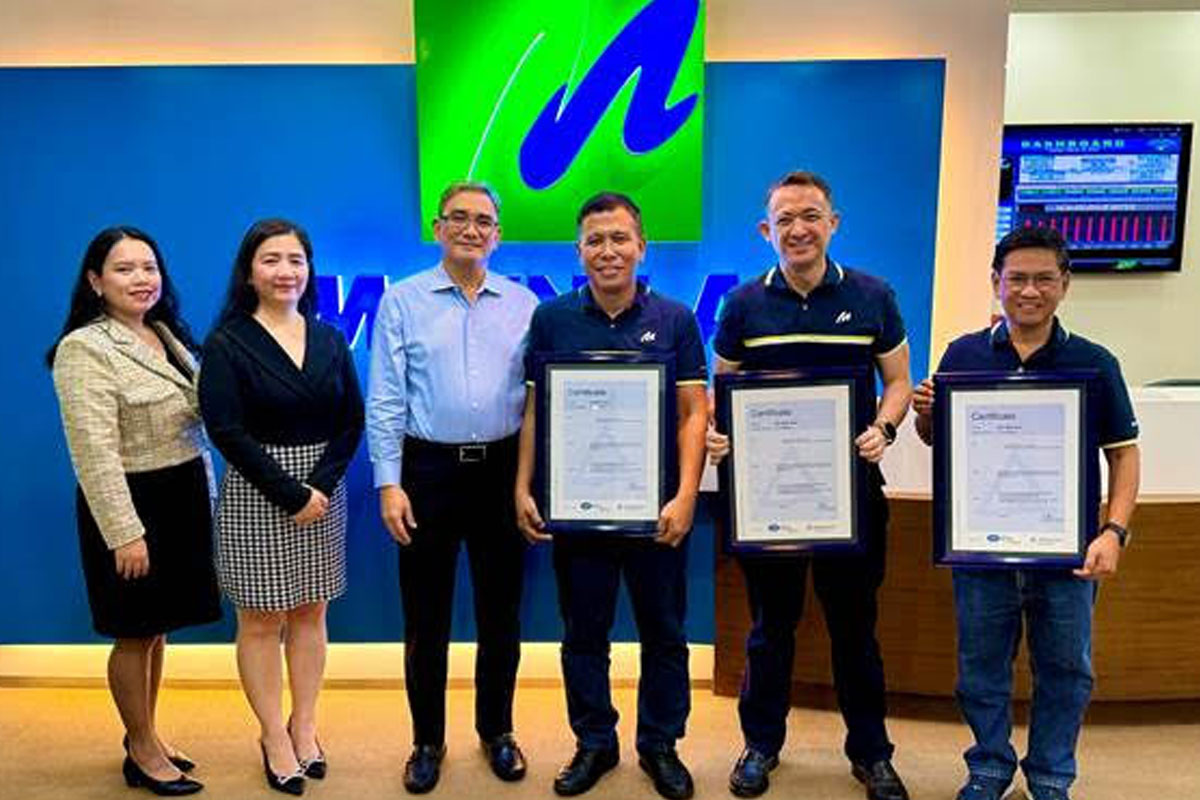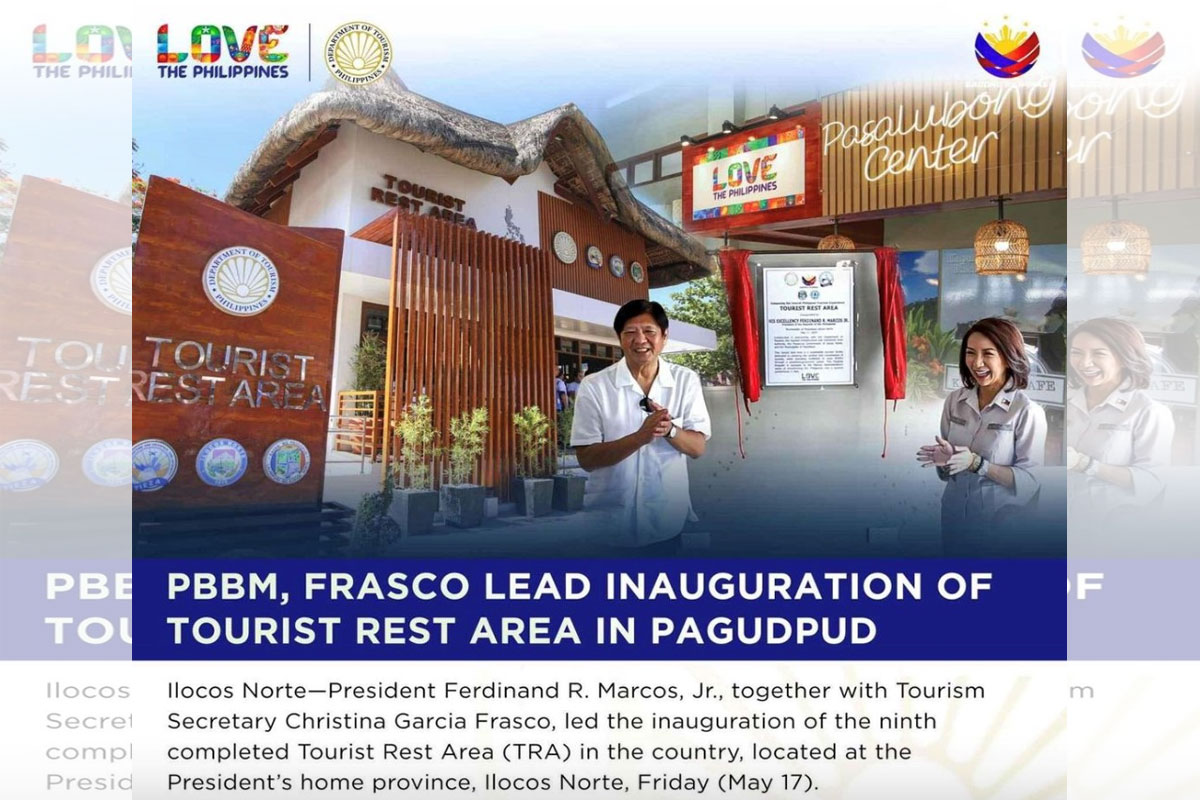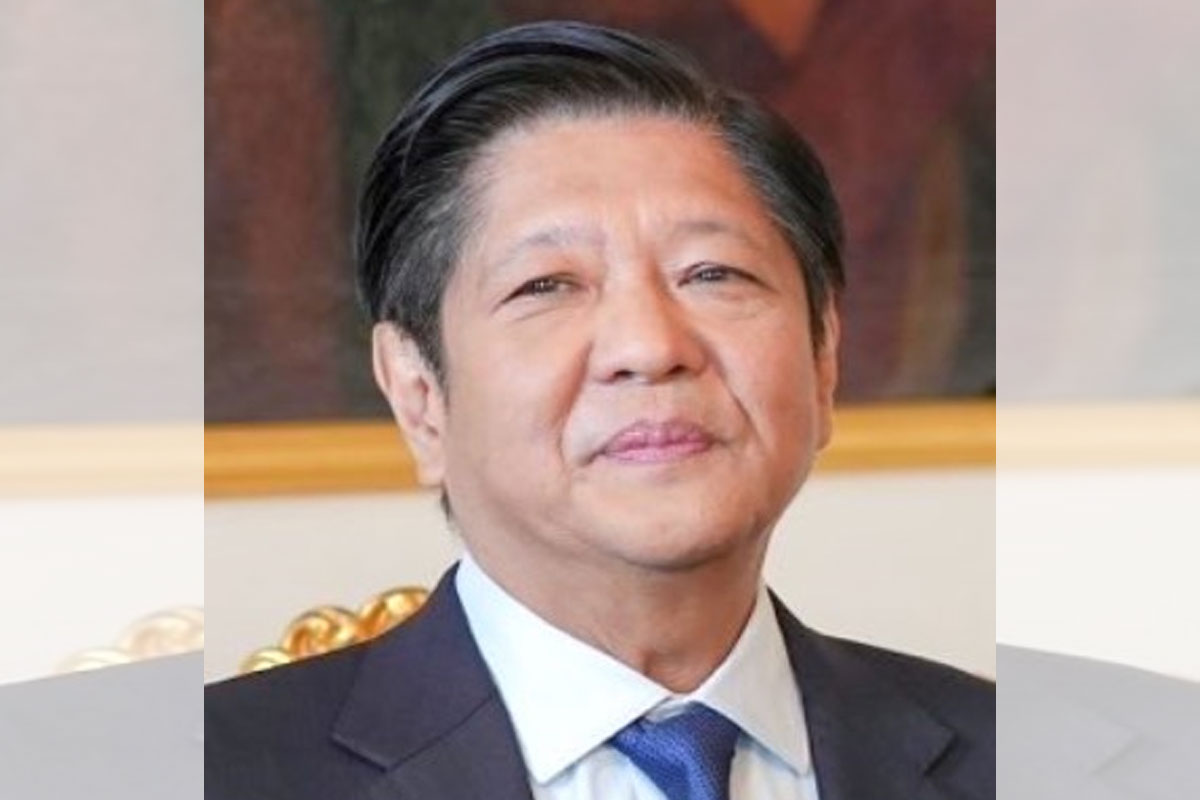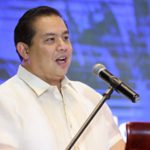
LRay backs Marcos’ push for balanced fertilization strategy
A HOUSE leader on Sunday backed President Ferdinand “Bongbong” Romualdez Marcos Jr.’s push for a balanced fertilization strategy involving the mixed-use of both biofertilizers or organic fertilizers and inorganic imports in farms.
Camarines Sur Rep. LRay Villafuerte, National Unity Party (NUP) president, said this will finally wean away farmers from decades of overdependence on costly imported inputs that shrink their incomes and impair the environment.
“Freeing our farmers from the decades-long chokehold of pricey imported chemical fertilizers in favor of the use of biofertilizers or organic inputs is an audacious agricultural policy shift that should have happened a long time back, in order to boost palay productivity, raise farmers’ incomes and pull down rice prices while at the same time reversing soil degradation and fighting planet warming,” Villafuerte, who represents the second district of Camarines Sur in the House of Representatives, said.
“It has to take a President who is concurrent Secretary of the Department of Agriculture (DA) to carry out this eco-friendly farming strategy, which actually makes sense as it will let him deliver on his multi-pronged commitments to modernize Philippine agriculture, slash rice prices, bump up farmers’ yields and incomes, nurture agribusiness and fight climate change,” he said.
Villafuerte suggested that the appropriate House committees conduct a joint inquiry on the impact on Philippine agriculture and farm productivity of our farmers’ overwhelming use for decades now of imported chemical fertilizers and a comparison between the actual costs for, and per-hectare yields of, local growers using organic and inorganic production inputs.
Issues that must likewise be looked into in this proposed joint inquiry, he said, are on: (1) whether chemical fertilizers like Urea really cost cheaper than, if not just the same, as biofertilizers, and (2) whether organic inputs or biofertilizers are still untested or have been proven to significantly boost crop yields.
The former governor issued this weekend statement after the DA came under fire last week for Memorandum Order (MO) 32 issued last April 27 by Agriculture Undersecretary Leocadio Sebastian for rice industry development, setting the guidelines on the distribution and use of biofertilizers in local farms.
President Marcos at the same time announced at a DA sectoral meeting, also last week, his Administration’s push for the use of biofertilizers by our farmers to cut their use of imported petroleum-based fertilizers.
In a video message released by the Presidential Communications Office (PCO), the Chief Executive and concurrent DA Secretary said: “We are totally dependent on petroleum-based fertilizer. Now, we are going to introduce biofertilizer to our farmers and teach them how to use it. And hopefully, this will ease our concerns when it comes to the supply of fertilizer. And we can fully control the availability of biofertilizer.”
The President said that DA trials on biofertilizers have shown “promising” results, such that his government is pursuing the mixed-use of both biofertilizers and inorganic fertilizers, in light of the high cost of the commonly used petroleum-based inputs.
“Now, there will still be a mix. Hindi mawawala ‘yung urea, hindi mawawala ‘yung mga non-organic. But we will lessen our dependence on importation when it comes to fertilizer supply,” Mr. Marcos said.
Villafuerte said this eco-friendly initiative would greatly benefit not only our farmers, but also the overwhelming majority of our people who consume rice as a staple, and agribusiness entrepreneurs producing and/or selling biofertilizers or organic fertilizers.
Consider the following points:
· The lower cost of organic fertilizers, as compared to imported chemical inputs, will increase the income of local growers;
· Higher yields from the use of organic fertilizers, as supposedly proven in DA field trials, will mean higher annual harvests or production of the staple grain, which will subsequently translate into cheaper rice for consumers;
· The promotion of locally produced biofertilizers will increase the demand for the products of domestic producers, thereby boosting the economy and creating more jobs;
· Promoting organic fertilizers will reduce our farmers’ use of chemical fertilizers, which degrade the soil or make it more acidic and lower crop productivity;
· By minimizing soil degradation with the lesser use of chemical inputs, we will further cut the release of greenhouse gases (GHGs) into the atmosphere that causes global warming and climate change;
· Promoting the use of locally-produced organic inputs will free us from the supply chain snafus of imported goods that had bedevilled import-dependent nations like the Philippines following the mobility restrictions of the Covid-19 pandemic and Russia’s invasion of Ukraine; and
· Lesser dependence on imports will insulate us from foreign exchange (forex) volatility, thus protecting our dollar reserves that are needed to continue stabilizing the peso.
Villafuerte doubted the critics’ claim that it is cheaper or just the same to use chemical fertilizers, which reportedly cost P1,100 per bag, as against the latest price bulletin of the Fertilizer and Pesticide Authority (FPA) that it actually costs P1,800.
And granting for the sake of argument that the critics can produce urea that sells for only P1,100 per bag, Villafuerte argued that these non-believers couldn’t keep such a low price for long for the benefit of local farmers.
He recalled that urea’s year-ago price was P3,000 a bag, as he pointed out that prices of petroleum-based imported fertilizers are volatile because these are dependent on the world market cost of oil.
For Villafuerte, “Chemical fertilizers are among the most expensive agricultural inputs that impacts negatively on our local farmers viability to compete with imported foodstuff from other countries, and the absence of fertilizer diversification, as what is being pushed by the President and the DA, will only keep our farmer uncompetitive and at a disadvantage.”
Hence, he said, the shift to biofertilizers and organic fertilizers will “lead to longer term sustainability as opposed to the myopia of continuously importing dollar-depleting petroleum-based chemical fertilizers.”
“We have had enough of supporting the farmers and fertilizer manufacturers of other countries. Let us begin by supporting the balanced fertilization program—and let that be one Marcos legacy,” he said.
Villafuerte noted that in a Dec. 12 memorandum to President Marcos, DA Senior Undersecretary Domingo Panganiban reported positive results for the 60 commercial demonstration trials that the Department had done with the mixed use of 50% biofertilizers and 50% inorganic fertilizers in palay farms in five regions in Luzon, and on corn fields in two regions, during last year’s wet season.
“Results continue to consistently support the value proposition for farmers to adopt balanced fertilization … with 50% less inorganic inputs for increased yield and earnings,” said Panganiban in his memo.
Panganiban told the President that the trials on the mixed-use approach pointed to an average yield increase of 39.01% and an average net-income increase of P26,855.89 during the Wet Season 2022 trial for rice, with the highest yield increase of 57.45% observed in Region 4B (Mimaropa or the Mindoro-Marinduque-Romblon-Palawan subregion), and the biggest net-income increase of P39,000 in Region 4A (Calabarzon or the Cavite-Laguna-Batangas-Rizal-Quezon subregion).
As for the corn trials, Panganiban reported an average yield increase of 15.15%, with the highest incremental yield increase of 25% recorded in Region 4B and the highest net-income increase of P48,387 in Region 5 (Bicol).
Panganiban further said that “local manufacturing can also be established in the Philippines starting 2024 with capacity to supply for 12 million hectares (ha) should there be a need for wide-scale distribution of the product.”
“Trainings and complementation activities with the DA-RFO (regional field office) field staff will also be done to increase farmers adoption and ensure technology transfer,” he said in the memo.
Villafuerte said the President’s promotion of a balanced fertilization strategy to raise palay harvests, increase farmers’ incomes and slash rice prices will boost the DA programs on Masagana 150 and Masagana 200, which are to step up government interventions to boost yields, respectively, to 150 and 200 cavans (50-kilo bags) per hectare.
Earlier, he backed the revival of the Masagana program, the highly successful intensified production program that enabled the government in the 1970s to beat a nationwide supply shortage and even export the staple later during the incumbency of the late President Ferdinand Marcos Sr.
Villafuerte said that much higher palay yields via a revived Masagana program would significantly boost the market supply of rice, leading to the cheaper retail cost of this staple that could help President Marcos attain his goal of eventually pulling down the price of rice to as low as P20 a kilo.
President Marcos reiterated his goal to make rice more affordable for Filipinos by eventually slashing its per-kilo price in the market to P20, during his March 16 visit to Pili, CamSur where he launched a Kadiwa ng Pangulo center, the first such retail outlet in Bicol.
Built on the provision of high-yielding variety (HYV) sees, cheap fertilizers and pesticides along with subsidized, collateral-free loans to let farmers acquire their production inputs to raise their output from the then-average of 40 cavans per hectare to 99 cavans, Masagana 99 enabled the country to become rice self-sufficient by 1975 and to even export the crop over the 1977-1978 period, according to Villafuerte.
On Villafuerte’s watch as three-term CamSur governor, the province—according to the Bureau of Agricultural Statistics (BAS)—became the country’s 12th biggest rice producer in 2008 and a higher rank of No. 8 in 2011. CamSur went up to No. 4 rice producer in 2016.
Villafuerte said that, “To ensure an even better Masagana program this time around, “the DA should work on crafting a supervised credit program that would be affordable for the would-be farmer-beneficiaries and at the same time be sustainable for both the government and the new program’s creditor-institutions.”
He said the DA should consider as among the funding sources for its Masagana program the P10-billion RCEF (Rice Competitiveness Enhancement Fund), which was set up by the Rice Tariffication Law (RTL) to financially help our palay growers sharpen their global competitiveness following the deregulation of rice imports.
Based on Philippine Statistics Authority (PSA) data, our palay output fell slightly to 19.756 million MT last year from 19.96 million MT the year before.






